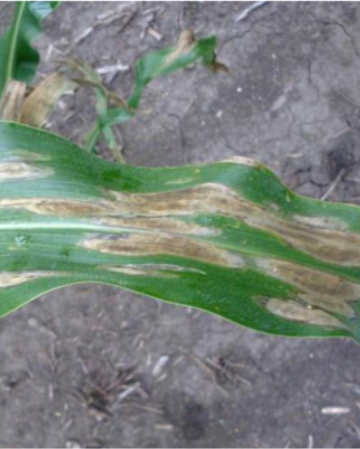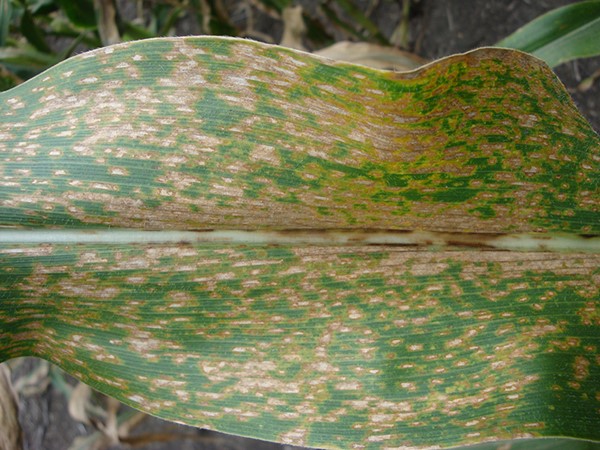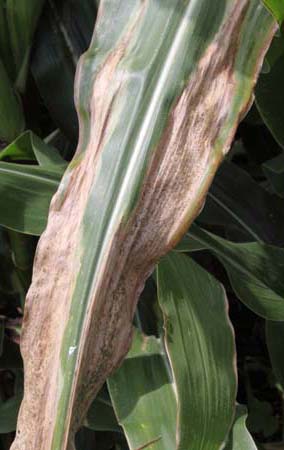Is continuous corn production possible?
May 10, 2021
The
short answer is yes. But if you’re thinking about continuous corn, you
definitely need to know what you’re getting into first.
This
kind of cropping system requires intense management, potentially higher input
costs and realistic yield goals in order to compensate for the gains that
usually come from growing corn in rotation – such as pest control and
replenishing soil nutrients.
To
wit: in a six-year study conducted by the University of Illinois, researchers
found that the yield penalty in a continuous corn system was 9 to 42 bushels
per acre compared to corn grown on soybean stubble. They also tracked a steady
year over year decline in corn yields over the course of the study – something
they attributed to nitrogen availability, accumulation of residue and, as with
any crop system, weather.
1
Still,
with the right management and attention to detail, continuous corn is possible.
Here are some tips.
Field selection and residue management
Findings
of University of Illinois study into continuous corn indicate that fields best
suited to this practice have good drainage plus high water-holding capacity,
optimum fertility, no compaction and low pest pressure – specifically insects
and disease.
Key
to growing corn-on-corn on the same field is residue management because a great
corn crop the year before leaves behind a lot of stubble and trash that can
lower soil temperatures in spring, harbour disease pathogens, protect
overwintering insects and reduce available nitrogen. All of this can lead to a
host of challenges, like delayed emergence and crop damage from pests.
You
want residue to decompose quickly, and this depends on a number of factors,
like soil moisture and temperature, microbial activity and enough nitrogen to
support those microbes. Post-harvest shredding can help break up and more
evenly spread residue, while intensive tillage or strip-tillage can help bury
it.
You’re
aiming for good seed-to-soil contact in warm soils come spring, so what ever
you can do to get rid of, break up and even out residue should be done.
Hybrid selection
Choose
hybrids that have the strength for this task. That means high vigor and
germination ratings, an excellent disease resistance package, insect resistance
and excellent root and stalk strength.
The
rationale is clear enough: Corn that can get out of the ground fast and strong has
a better chance of getting through the previous year’s residue, especially if
conditions are cool. As well, the corn residue it’s pushing through can be an
excellent reservoir of overwintering disease pathogens, such as Northern corn
leaf blight, Goss’s wilt, grey leaf spot and Diplodia stalk rot, so which is where the disease package comes in.

Figure
1: Northern corn leaf blight.

Figure
2: Gray leaf spot.

Figure
3: Goss’s wilt.

Figure
4: Diplodia ear and stalk rot.
The
potential for insect damage is also increased with continuous cropping, so look
for hybrids with good resistance to some of the key pests, like corn rootworm
and European corn borer.
However
– be very aware that populations of
corn rootworm resistant to Bt traits have been found in Ontario, so use an
insecticidal seed treatment, hone your scouting techniques, and seriously
consider rotating out of corn after no more than three years.
Seed
treatment
Seed
treatments are an absolute must in continuously cropped corn. You need one with
an excellent fungicide package to protect against the seedling disease complex,
as well as an excellent insecticidal component for protection against early
season pests like wireworm, seed corn maggot, grubs and more. Don’t plant
without one.
Fertility
Nitrogen
is your biggest concern. Soil-applied N isn’t necessarily plant-available N,
plus soil microbes busy breaking down residues can immobilize nitrogen just
when you need it most.
Use
a higher rate of nitrogen when planting corn after corn. Compared to corn after
soybeans, corn on corn may require an additional 34 to 56 kg per hectare (30 to
50 pounds per acre).2
Nitrogen
uptake in corn is greatest during its late vegetative stages, from about V6 to
R1, so consider a split application of N – once at pre-plant and again around
V5-V6 – for greatest nutrient efficiency. Remember that nitrogen needs to be
right in the root zone to be plant-useable.
Maintain
optimum levels of phosphorous and potassium as this supports strong stand
establishment while minimizing any problems with stalk rots and stalk strength.
Corn uses more of these two nutrients than soybeans do, so balance your
fertility program accordingly.
Planting considerations
Emergence
losses are generally higher in continuous corn, but with proper residue
management, hybrid selection, fertility and seed treatments, this is not likely
to be a huge problem.
It
means that increasing your seeding rate to offset such losses might not be
necessary. But talk to your seed partner to determine the optimum seeding rate
for the hybrid or hybrids you’ve chosen.
Lastly,
plant your corn-on-corn acres last to give maximum time for soil under all that
corn residue to warm up and dry out a bit.
Weed control
Weed
control can be a challenge in continuous corn. You really need to be proactive
with early weed control because options are limited once the crop is
established.
Again,
residue can be a problem because it can reduce the efficacy of any soil-applied
herbicides and it can also protect young weed seedlings from post-emergent contact
herbicide applications.
Early
season weed control in corn is absolutely key to crop success, so start with a
pre-plant, or pre-emergent, soil-applied herbicide that has some residual
activity to keep early weeds, including any resistant ones, at bay.
Make
post-emergence herbicide applications when the weeds are still quite small.
Make sure to use multiple modes of action between your pre- and post-emergence
herbicide applications. For more information about this, please visit MixItUp.ca. Pay
special attention to volunteer corn, which carries herbicide resistance traits
and can be harder to manage.
Indeed,
pay attention at harvest to minimize volunteer corn the following season.
Lodged plants, ear drop, incorrect combine adjustments and harvesting during
less than ideal conditions can all contribute to a volunteer corn problem next
spring.
Disease control
Continuous
corn cropping means you are not breaking disease cycles, so scout vigilantly
and take action immediately if necessary.
If
disease pressure looks fairly normal, scout at tasselling (VT) and decide if a
fungicide is warranted. In fields with heavy disease pressure, start scouting
earlier – you may need to do a sequential fungicide application, spraying at
pre-tassel then again in the VT to R2 window. Talk to your agronomist or advisor
about fungicide timing and what product options will give you the best control.
It’s all about protecting yield!
Footnotes:
1 Gentry, L.F., Ruffo, M.L., and Below, F.E. 2013. Identifying factors controlling the
continuous corn yield penalty. Agronomy Journal. 105: 295-303
https://acsess.onlinelibrary.wiley.com/doi/full/10.2134/agronj2012.0246
2 Nielsen, R.L., Johnson, B., Krupke, C., and Shaner, G. 2007. Mitigate the downside risks of corn
following corn. Corny News Network. Purdue University. https://www.agry.purdue.edu/ext/corn/news/timeless/CornCorn.html.